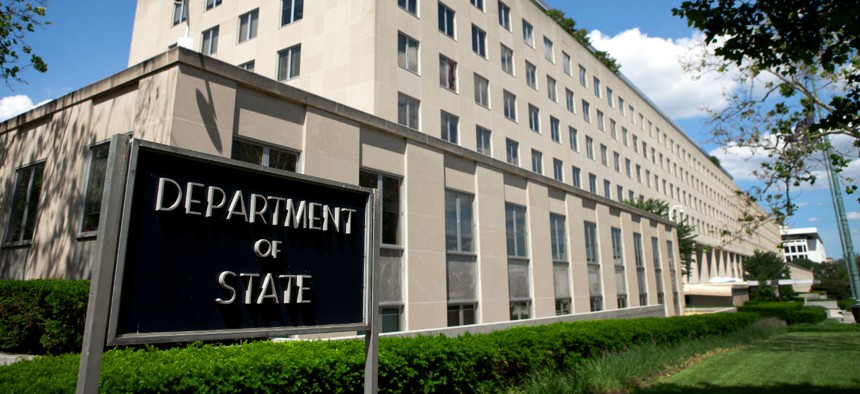State Department Reforms Have Been Hindered by Changes in Staff and Priorities, Watchdog Finds
One initiative is complete, 13 are ongoing, two were stalled and one was terminated, GAO says.
The State Department is implementing most of the 17 reforms it reported to Congress last year, but leadership transitions and changes in priorities have created uncertainty about support for the efforts, a new watchdog report found.
Shortly after the State Department entered the implementation phase of the reforms in early 2018, there were several leadership changes that put reforms in question, the Government Accountability Office found in a report Thursday. The reforms came in response to President Trump’s 2017 executive order to improve efficiency and reorganize the federal government.
The firing of then-Secretary Rex Tillerson and replacement with then-CIA Director Mike Pompeo in March 2018 was, “Obviously, the biggest most notable [leadership transition], to most people,” Jason Bair, acting director of International Affairs and Trade at GAO, told Government Executive.
Then in April 2018 the department disbanded the teams in charge of overseeing the reforms and delegated responsibilities to bureaus and offices for implementation. Some department officials reported to GAO that they received little to no guidance on their programs. “Although implementing officials said that they have managed to incorporate reform-related work into their daily responsibilities, they noted that there were multiple benefits from having had dedicated planning teams,” the report said.
GAO explained that the leadership transitions at the department and lack of communication led to “uncertainty among implementing officials about the future of individual reform projects” and the shift of responsibility from “teams to bureau-level implementing officials resulted in fewer resources and a lack of senior leadership involvement and attention for some projects.”
The watchdog agency recommended that the secretary of State determine which of the incomplete reforms should be implemented and communicate this to Congress. Secondly, the secretary should establish one team dedicated to managing the implementation of all reform efforts, GAO said.
State officials concurred with the recommendation to prioritize projects, but disagreed with the need to create one team for all reforms. The determination of where projects should be assigned should be made on a case-by-case basis, State argued.
Leadership and staffing shortages at the State Department have been well-documented through the Trump administration. Government Executive reported that in the first eight months of the administration, the civil workforce decreased about 6.3% and foreign affairs specialists decreased about 11.9%. There was also a hiring freeze for the department from February 2017 to May 2018.
When Pompeo took office, the report noted, “His top priority was ending the hiring freeze and restarting a concerted recruitment effort because vacancies in key positions and a general staffing shortfall would otherwise have led to what one senior official described as a ‘cataclysmic failure.’” In addition to the reforms, Pompeo wanted to pursue cybersecurity, data analytics and merge existing bureaus to create a Global Public Affairs Bureau. However, agency officials did not formally communicate this to Congress.
GAO’s report studied State reorganization efforts as of April 2019. One of the 17 reforms was completed: a plan to improve efficiency of internal policy and decision-making processes. Thirteen were ongoing and for 12 of these, for the first two years of implementation, the bureaus and offices in charge reported to one or more officials serving on an acting basis. Two reforms were stalled that dealt with U.S. deployment and coordination of resources and staffing abroad. Lastly, one was terminated: a plan to combine the Bureau of Overseas Buildings Operations and the Bureau of Administration into a unified real property organization.




